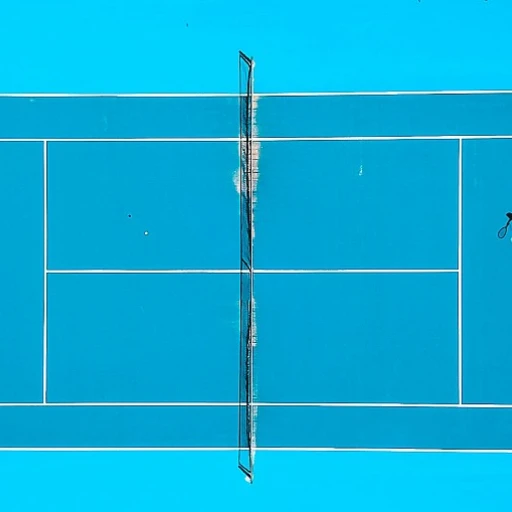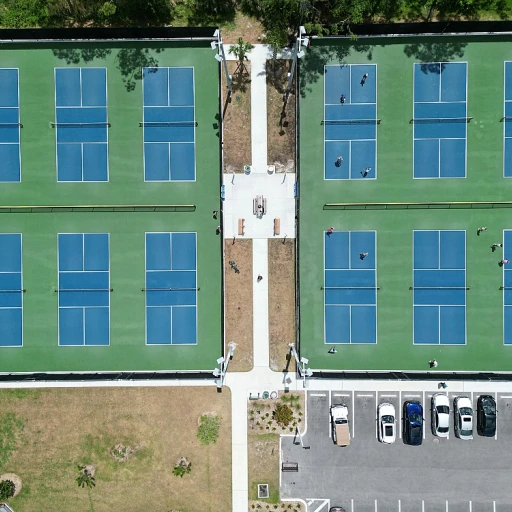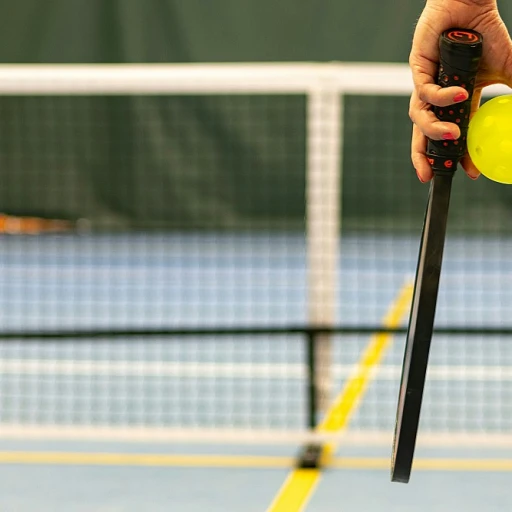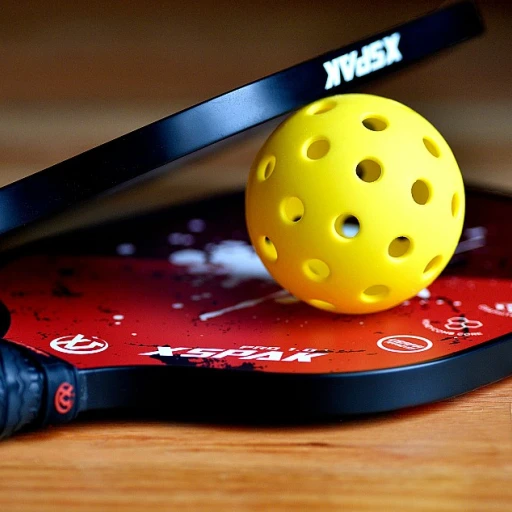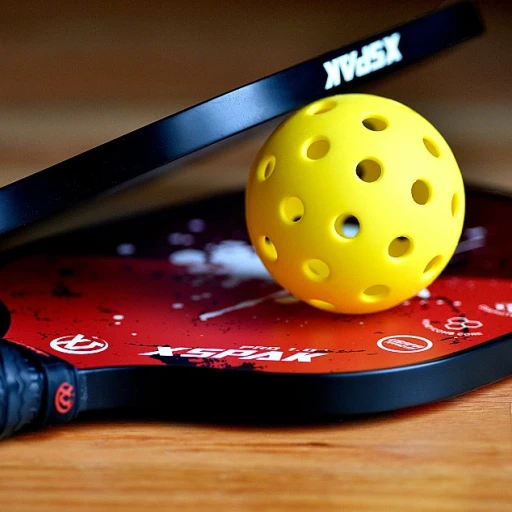
Understanding the Continental Grip
Grasping the nuances of pickleball grip styles is crucial for elevating your game, and one of the versatile grips to master is the continental grip. This grip provides a strategic angle for both offensive and defensive shots, allowing players to confidently transition between different techniques.
Why Choose the Continental Grip?
The continental grip is often favored by players who want a balanced approach between forehand and backhand shots. Unlike the eastern grip, which focuses more on a specific swing type and often limits versatility, the continental grip offers adaptability to varying plays.
Suitable for hitting both forehands and backhands, the grip continental approach makes it easier to adjust grip without compromising on control. With this grip in hand, players can seamlessly handle quick exchanges and respond rapidly to opponents' moves.
Enhancing Shot Efficiency
Using this pickleball grip enables players to make solid contact with the pickleball paddle face, enhancing the player's ability to hit topspin on the ball. Additionally, it caters to adjusting the paddle face quickly for swift volleys and angled shots.
The continental grip will foster proficiency in managing different shot techniques. By enabling quick shift between defensive backhand and powerful forehand shots, it creates a synergetic connection between shot versatility and paddle grip.
Application across Other Sports
Players familiar with tennis grips might find the continental grip in pickleball familiar, as it corresponds to similar techniques used in handling both forehand backhand shots in tennis. This familiarity allows tennis players to transition smoothly into pickleball, leveraging their existing skills.
Overall, mastering the continental grip is essential for players aiming to refine their game style. If you are looking to enhance your gameplay strategies, consider exploring advanced strategies such as mastering the art of pickleball stacking to complement your gripping techniques.
Benefits of Using the Continental Grip
Advantages of Mastering the Forehand and Backhand with Continental Grip
Utilizing the continental grip in pickleball offers numerous benefits that can significantly enhance a player's overall game. One of the key rewards is its ability to seamlessly transition between a forehand and a backhand shot, which can be particularly advantageous during fast-paced exchanges. This grip's versatility allows for fluid adjustment of the paddle face, whether aiming for topspin or flat shots. Additionally, players who adopt this grip can maintain better control and spin on the ball. The ability to hit topspin effectively with a continental grip can make your shots more consistent and harder for opponents to counter. Whether you're implementing a strong forehand or a solid backhand, maintaining this grip ensures your hits are precise and controlled. The continental grip transcends simplistic grip styles like the eastern or western grip by offering adaptability across different types of shots and angles. Its alignment is also favorable for players who intend to transition from tennis grips such as the eastern forehand or western grip, enhancing skills in a multidimensional way. Exploring this grip's benefits further encourages players to elevate their pickleball strategy and develop a more robust grasp on their performance. To truly embrace the continental grip's advantages, mastering the art of singles play will ensure you capitalize on every opportunity for improvement in the game.Challenges and Common Mistakes
Overcoming Common Pitfalls with the Continental Grip
Making the transition to a continental grip in pickleball can present several challenges for players, especially those accustomed to other grips. One of the style's key hurdles is hitting both forehand and backhand shots smoothly. This versatile grip is particularly different from the eastern or western grip, which can lead to some confusion when implementing it in your game. Adapting the grip will also likely affect your paddle face control. Since the paddle's position is crucial in delivering effective shots with topspin, players might initially struggle with maintaining that delicate balance while swinging. Another challenge many players encounter is adjusting the dominant hand's knuckle and finger positions. These adjustments are vital for comfortably holding the paddle, providing stability and allowing for greater shot accuracy. Using a continental grip may make beginners uncomfortable, but repeated practice will make the required hand position more intuitive. Common mistakes such as over-gripping the paddle or slipping back into an eastern forehand grip can hinder your performance. To effectively harness the strengths of the continental style, make a conscious effort to maintain the correct wrist and hand alignment throughout the game. Consider reviewing resources on enhancing your pickleball game with proper electrolyte balance to support your endurance during intense practice sessions.Step-by-Step Guide to Adopting the Grip
Adopt the Grip with Precision
Adopting the Continental grip in pickleball can be a game-changer, especially when executed with precision. Here's a comprehensive guide to help you seamlessly transition and master this crucial pickleball grip style.- Position Your Hand Correctly
- Start by holding your paddle like a handshake, ensuring your dominant hand comfortably envelops the handle.
- The base knuckle of your index finger should align with the third bevel of the paddle grip.
- Picture your paddle as a tool for a perfect balance between a forehand and backhand, allowing for versatile shots.
- Maintain the Paddle Face Alignment
- It’s essential to keep the paddle face slightly open when executing various shots, particularly in transitioning between forehand and backhand strokes.
- Visualize how your grip will impact your paddle's face angle, allowing for efficient topspin and precise control.
- Adjust Your Grip Based on Shot Requirements
- Depending on the shot, whether it's a forehand or handed backhand, slight grip adjustments may be necessary.
- For a solid eastern forehand, slightly rotate the paddle in your hand, moving towards an eastern grip without losing the continental essence.
- With hitting topspin, ensure a secure yet flexible hold to optimize the paddle's contact with the ball.
- Practice the Transition
- To effectively toggle between different grip styles such as western or eastern, deliberate practice will ease the transition.
- Experiment with grip variations during friendly pickleball games, noting how each adjustment affects your shot execution.
Drills to Improve Your Grip
Perfecting Your Continental Grip Technique
Mastering the continental grip in pickleball involves dedicating time and effort to drills that focus on hand positioning and grip consistency. Engaging in these practice drills will improve your game as you learn to hit more controlled shots with both your forehand and backhand. Below are some suggested drills specifically designed to help you enhance your continental grip:- Wall Rally: Stand a few feet from a wall and continuously tap the ball using your pickleball paddle in a controlled manner. Focus on maintaining your wrist in a relaxed yet firm position while keeping the paddle face slightly open. This drill aids in improving your hand-eye coordination and adjusting your grips as needed.
- Partnered Volleys: With a partner, exchange volleys using your continental grip. Start with slow and consistent hits, gradually increasing the speed as you become comfortable. Concentrate on your grip and ensure your knuckle finger is correctly positioned for optimal control over the ball's spin and direction.
- Service Practice: Serving is a critical aspect of the pickleball game. Practice serves using the continental grip, experimenting with different spins and angles. This will not only improve your grip but also elevate your mastery of forehand backhand transitions in real match situations.
- Topspin Training: Adjust your grip slightly towards the eastern grip for better topspin. This adjustment allows more topspin to be applied on both forehand and backhand shots. Remember, while a strong grip will result in more power, it's the fine-tuning of your paddle angle that ensures precision.
Expert Tips and Player Insights
Experienced Insights for Mastering the Grip
Exploring the continental grip is an adventure in technique that sets successful pickleball players apart. When aspiring to refine your grip, here are some expert insights to guide your journey:
- Develop mental resilience: Perfecting the continental pickleball grip may present challenges initially, as adapting your hand and paddle technique could feel uncomfortable. Veterans advise starting slowly and remaining patient with the process.
- Observe and learn: Watching skilled players handle their paddle can provide invaluable insights into how the grip is applied across various shots, such as the forehand and backhand.
- Consistent Practice: Dedicate regular time to practice the step-by-step methods discussed earlier, honing how your hand adjusts during dynamic play. Building muscle memory is crucial.
- Anticipate grip adjustments: Games demand flexibility. Find comfort in switching between grips—such as eastern or western—based on the shot, without disrupting your overall game flow.
- Focus on paddle face awareness: Achieving control is often tied to how well you understand the paddle face during different shots. Experienced players emphasize being mindful of how grip directly affects ball trajectory and contact.
Through dedication and integrating these insights, mastering the continental grip transforms your overall game, aligning technique with natural athletic instinct. By understanding the grip's nuances, as elaborated previously, and undergoing regimented drills, you place yourself on the trajectory for enhanced pickleball performance.



